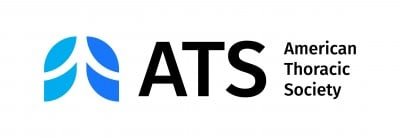Education
How Cybercriminals Exploit Education in the Age of AI

Johannesburg, South Africa – September 9th, 2025 Today, September 9th, 2025 is International Day to Protect Education from Attack. While the focus has traditionally been on the physical risks to schools in conflict zones, the bigger battle ground in 2025 is digital.
“The modern classroom has shifted into a digital schoolyard built on platforms like Microsoft Teams, Google Classroom, and Zoom,” says Lorna Hardie, Regional Director: Africa, Check Point Software Technologies.
“These tools are designed to drive collaboration and innovation, however, they are also prime targets for cyberattacks, especially those using AI. Without stronger “digital fences,” schools and universities are exposed to risks that directly threaten students, educators, and even national innovation,” she adds.
Education: The World’s Most Attacked Sector
The education sector has become the number one target for cybercriminals worldwide. According to Check Point Research (CPR), schools and universities faced an average of 4,356 cyberattacks per organisation every week in 2025 — a 41% year-on-year increase. While all regions are targeted, Africa has seen a 56% surge to 4,463 attacks in 2025.
The Education sector is an exploding sector for cyberattacks due to several specific reasons:
- Schools house vast amounts of sensitive data—from personal information of students and staff to financial and research data—making them attractive to attackers.
- Schools need to connect with multiple parties for curriculum schedules, term holidays, online classes. This means the intrusion surface is simply bigger.
- Many educational institutions lack the resources to secure their systems adequately; some simply do not have the know-how or skilled resources to ensure defense measures are also up to date.
“The combination of factors inevitably turns this sector into a ‘soft target” with a ‘hard” payoff,” Hardie says.
Cyberattacks Impacting More Than Just IT Downtime.
The impact of cyberattacks on the education sector extends far beyond system outages. School closures and exam disruption caused by ransomware have forced universities offline for weeks, cancelling or delaying assessments.
In 2023, ransomware attacks cost educational institutions much more than expected with median payments reaching $6.6 million for lower education and $4.4 million for higher education institutions according to a Sophos report.
Despite these payments, recovery remains a significant challenge, with only 30% of victims fully recovering within a week, down from last year, as limited resources and teams hinder recovery efforts. These ransom payments severely impact the school’s reputation, forcing schools to cut corners in other areas, impacting the quality of education to their student.
In recent times, Dark web sales of student data have been found, from transcripts and personal records to forged certificates causing personal harm to individuals and organisations.
In severe cases of cyberattacks, there have been reports of institutional collapse; the 157-year old Lincoln College in Illinois was forced to shut its doors permanently after a ransomware attack.
Every breach chips away at student trust, academic credibility, and institutional resilience.
The AI Factor: Cybercrime at Machine Speed
Artificial Intelligence is reshaping both the threat landscape and the defensive playbook for education. On the attacker side, AI enables deepfake phishing campaigns targeting students and staff, as well as automated credential theft through large-scale password spraying. Now with the power of AI, AI-driven malware now scans and exploits vulnerabilities in minutes, not weeks as in previous times. Attackers are also weaponising AI in school settings, creating highly convincing scams that make phishing far more effective than ever before integrating cybersecurity education early—especially before AI adoption begins—is vital, cultivating the awareness needed to resist AI-gnerated threats in digital classrooms.
In July 2025 alone, CPR identified 18,000 new education-related domains, with one in every 57 flagged as malicious. Many of these were AI-generated, designed to mimic exam portals, fee-payment systems, or login pages.
On the defender side, AI can now help detect anomalies in login behaviour across thousands of accounts, identify zero-day malware before signatures exist and provide AI-powered prevention-first security, blocking phishing, ransomware, and malicious domains in real time.
Crucially, integrating cyber security education early—especially before AI adoption begins—is vital, cultivating the awareness needed to resist AI-generated threats in digital classrooms. For schools with small IT teams, AI-driven cyber security is no longer optional — it’s the only way to keep pace with attackers.
How Education Can Stay Safe in the AI-Era
To safeguard the digital classroom, education institutions must adopt a prevention-first strategy backed by AI-powered tools. Some key suggestions includes :
Harden authentication by enforcing MFA and monitoring for MFA fatigue phishing tactics.
Network segmentation to prevent attackers from moving laterally once inside.
Reinforce phishing awareness for staff and students with examples of current scam
Patch and update systems regularly, especially widely used platforms such as email and collaboration tools.
Cyber awareness training for students, educators, and parents — helping them spot AI-generated scams, especially sophisticated phishing scams and recognising suspicious links
These aren’t just IT measures — they are core safeguards for the future of learning.
“Education is the backbone of every country’s future, but without strong cyber security, it becomes an easy target for disruption.
Globally we’ve seen a surge in AI-powered attacks that not only steal sensitive data but also interrupt learning for millions of students. Protecting the education sector requires a prevention-first approach, with AI-powered defences, stronger digital perimeters, and awareness across every level. Only then can we ensure that digital classrooms remain safe havens for growth and innovation,” Hardie says.
Protecting the Future of Education
On this International Day to Protect Education from Attack, we must recognise that cyber security is now fundamental to safeguarding education. The “digital schoolyard” is under constant attack, with AI making threats faster, smarter, and harder to detect. But with the right tools, collaboration, and prevention-first strategies, schools can protect not just their data, but the futures of millions of students.
Education
UK universities cut back on crucial research because of reduced funding | Research funding

Universities are cutting back on vital research, with world-leading work on deadly conditions such as cancer and heart disease under threat from an erosion in funding from government and charities, according to a report.
The report, compiled by Universities UK, found that one in five UK universities have reduced their research activity, including cuts to life sciences, medicine and environmental sciences, and many said they were expecting to make steeper cuts in the future because of mounting financial pressures.
Health charities are major funders of high-value medical and life sciences research – including areas such as oncology and dementia – but the report said universities “are backing away from charity-funded research” because of the additional costs involved.
Dan Hurley, Universities UK’s deputy director of policy, said: “There is a real need for us to work with funders and government to address some of the risks here and get under the skin of what this might look like.
“What we do know is that most charity funding is in the medical and health space, so it is definitely having an impact in that area.
“We can’t pinpoint the degree to which this is impacting specific disciplines but the findings in this report are a warning that really difficult decisions are being taken on the ground and if we want to maintain the UK’s international competitiveness when it comes to research then we need to go further to support it.
“While these headline findings are a strong warning in themselves, this is going to require ongoing monitoring.”
The report, done in collaboration with the Campaign for Science and Engineering and the Association of Research Managers and Administrators using surveys of academic researchers, found that “sustained financial constraints” were likely to diminish the estimated £54bn annual contribution made by university research to the UK economy.
The study found there had been a 4% decrease in research staff in the biological, mathematical and physical sciences in the last three years, while staff in medicine, dentistry and health have dropped by 2%, mainly in highly expensive clinical medicine.
after newsletter promotion
The funding difficulties were undermining university research culture, and managers reported an impact on morale and wellbeing, less participation in conferences and knowledge exchanges, and had particular concerns for early career researchers who were struggling to get the support they needed to establish networks.
One major reason was that UK government research funding awarded on the basis of departmental track records and quality has been severely eroded by inflation, while universities are less able to use international tuition fee income to subsidise research because of falling numbers of overseas students.
“Fluctuations in international recruitment and fees from international students will have an impact on research funding – because universities aren’t able to recoup the full economic cost of research, cross-subsidisation had become a feature of funding for many,” Hurley said.
The report concluded that the UK’s position as a global leader in research and innovation is under threat as research becomes too costly to sustain, and more universities are expected to make “tough decisions” on cuts in the future.
“Universities are doing everything they can to improve efficiencies and address those financial challenges. But what’s clear is that further efficiencies are not going to be enough on their own to address these broader risks to areas of research, with implications for our research system’s international competitiveness.
“So we also need action from the government on the future of quality-related funding, which hasn’t kept pace with inflation for a decade. That’s going to be critical to restoring stability to areas of research,” Hurley said.
The Department for Science, Innovation and Technology has been contacted for a response.
Education
ATS Breathe Easy – Lessons Learned from AI in Medical Education
Education
Education report calling for ethical AI use contains over 15 fake sources

AI language models like the kind that power ChatGPT, Gemini, and Claude excel at producing exactly this kind of believable fiction because they first and foremost produce plausible outputs, not accurate ones. They always generate a statistical approximation based on patterns absorbed during training. When those patterns don’t align well with reality, the result is confident-sounding misinformation. Even AI models that can search the web for real sources can potentially fabricate citations, choose the wrong ones, or mischaracterize them.
“Errors happen. Made-up citations are a totally different thing where you essentially demolish the trustworthiness of the material,” Josh Lepawsky, the former president of the Memorial University Faculty Association who resigned from the report’s advisory board in January, told CBC, citing a “deeply flawed process.”
The irony runs deep
The presence of potentially AI-generated fake citations becomes especially awkward given that one of the report’s 110 recommendations specifically states the provincial government should “provide learners and educators with essential AI knowledge, including ethics, data privacy, and responsible technology use.”
Sarah Martin, a Memorial political science professor who spent days reviewing the document, discovered multiple fabricated citations. “Around the references I cannot find, I can’t imagine another explanation,” she told CBC. “You’re like, ‘This has to be right, this can’t not be.’ This is a citation in a very important document for educational policy.”
When contacted by CBC, co-chair Karen Goodnough declined an interview request, writing in an email: “We are investigating and checking references, so I cannot respond to this at the moment.”
The Department of Education and Early Childhood Development acknowledged awareness of “a small number of potential errors in citations” in a statement to CBC from spokesperson Lynn Robinson. “We understand that these issues are being addressed, and that the online report will be updated in the coming days to rectify any errors.”
-

 Business2 weeks ago
Business2 weeks agoThe Guardian view on Trump and the Fed: independence is no substitute for accountability | Editorial
-
Tools & Platforms1 month ago
Building Trust in Military AI Starts with Opening the Black Box – War on the Rocks
-

 Ethics & Policy2 months ago
Ethics & Policy2 months agoSDAIA Supports Saudi Arabia’s Leadership in Shaping Global AI Ethics, Policy, and Research – وكالة الأنباء السعودية
-

 Events & Conferences4 months ago
Events & Conferences4 months agoJourney to 1000 models: Scaling Instagram’s recommendation system
-

 Jobs & Careers2 months ago
Jobs & Careers2 months agoMumbai-based Perplexity Alternative Has 60k+ Users Without Funding
-

 Podcasts & Talks2 months ago
Podcasts & Talks2 months agoHappy 4th of July! 🎆 Made with Veo 3 in Gemini
-

 Education2 months ago
Education2 months agoMacron says UK and France have duty to tackle illegal migration ‘with humanity, solidarity and firmness’ – UK politics live | Politics
-

 Education2 months ago
Education2 months agoVEX Robotics launches AI-powered classroom robotics system
-

 Funding & Business2 months ago
Funding & Business2 months agoKayak and Expedia race to build AI travel agents that turn social posts into itineraries
-

 Podcasts & Talks2 months ago
Podcasts & Talks2 months agoOpenAI 🤝 @teamganassi


